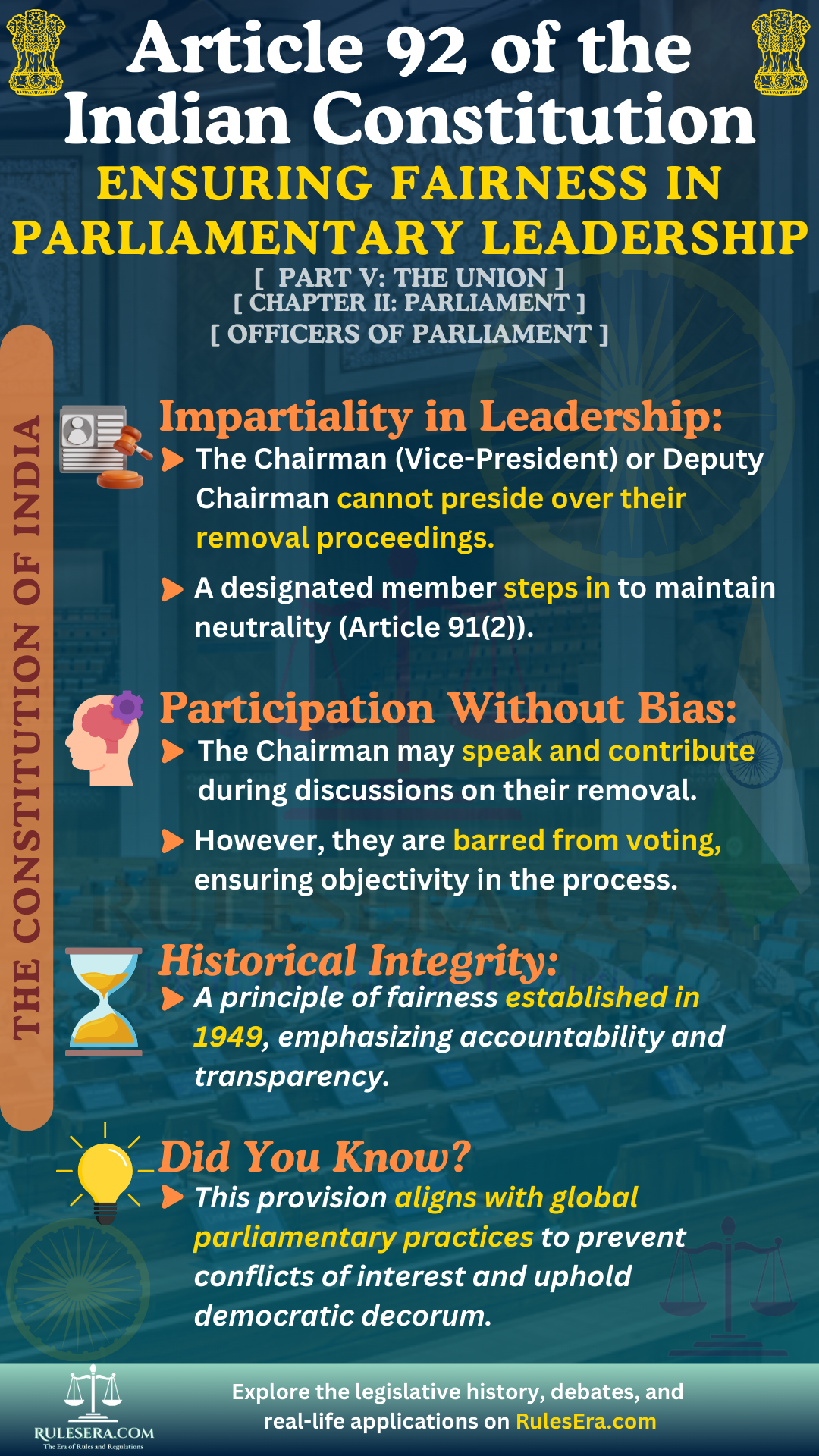Part V: The Union
Chapter II: Parliament
Officers of Parliament
Article 92: Chairman or Deputy Chairman Not to Preside During Removal Consideration

--- Original Article ---
A member holding office as Deputy Chairman of the Council of States—
- (1) At any sitting of the Council of States, while any resolution for the removal of the Vice-President from his office is under consideration, the Chairman, or while any resolution for the removal of the Deputy Chairman from his office is under consideration, the Deputy Chairman, shall not, though he is present, preside, and the provisions of clause (2) of article 91 shall apply in relation to every such sitting as they apply in relation to a sitting from which the Chairman, or, as the case may be, the Deputy Chairman, is absent.
- (2) The Chairman shall have the right to speak in, and otherwise to take part in the proceedings of, the Council of States while any resolution for the removal of the Vice-President from his office is under consideration in the Council, but, notwithstanding anything in article 100, shall not be entitled to vote at all on such resolution or on any other matter during such proceedings.
Explanation
Article 92 of the Constitution of India specifies the conduct and limitations on the Chairman and Deputy Chairman of the Council of States (Rajya Sabha) during proceedings involving their potential removal from office. This provision ensures impartiality and transparency by restricting these officials from presiding over sessions discussing their own removal.
Clause-by-Clause Breakdown
Clause (1): Restrictions on Presiding During Removal Discussions
Under Clause (1), while a resolution for the removal of either the Chairman (Vice-President) or the Deputy Chairman is under consideration, the individual in question is not permitted to preside over the Council's sessions. Instead, Article 91(2) becomes relevant, allowing another member to chair the session. This clause ensures that the official facing removal does not influence the proceedings.
Example: In a hypothetical scenario, if a motion is brought against the current Deputy Chairman, they would step aside from presiding over the session, allowing another member to conduct the proceedings, preventing conflicts of interest.
Clause (2): Participation and Voting Rights During Removal Proceedings
Clause (2) grants the Chairman (Vice-President) the right to engage in discussions when a resolution for their own removal is under debate. However, the Chairman is explicitly barred from voting on the resolution or any related matter, irrespective of Article 100, which typically allows voting under specific circumstances.
Example: In practice, if the Rajya Sabha debates a motion to remove the Vice-President, he may contribute to the discourse but is prohibited from voting on his own removal. This helps to maintain procedural integrity.
Historical Significance
This article reflects the emphasis on fairness and impartiality in leadership accountability. Inspired by democratic traditions from other parliamentary systems, the framers of the Constitution ensured that individuals facing removal do not preside over their own proceedings. The article remains unchanged since its adoption, underscoring its continued relevance.